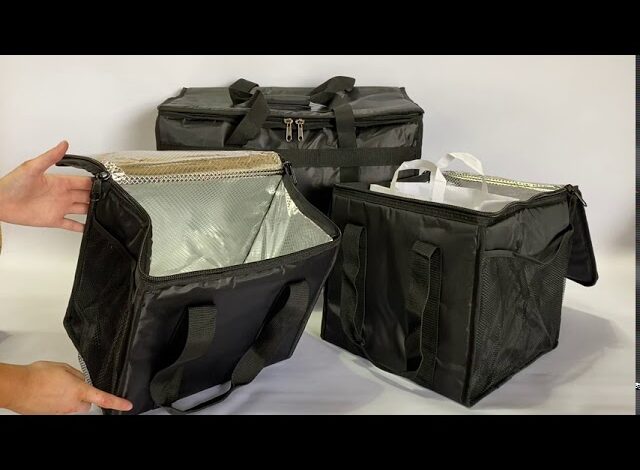Insulation Bags or Food Paper Boxes: What’s the Best Option for Takeout?

Takeout has become an essential part of our dining experience. Whether you’re craving a steaming bowl of ramen or a slice of gourmet pizza, the convenience of ordering food to your doorstep is hard to resist. But have you ever stopped to think about how that delicious meal gets from the restaurant to your table? The packaging plays a crucial role in ensuring that your food stays hot, fresh, and appetizing.
Two popular contenders in the takeout packaging arena are insulation bags and food paper boxes. Each option offers its own set of benefits and drawbacks, making it challenging for businesses and consumers alike to determine which one reigns supreme. As we explore these options together, you’ll discover insights that can help elevate your takeout game—whether you’re a restaurant owner looking for efficient solutions or someone who just wants their evening dinner delivered with style!
The Rise of Takeout Culture
The rise of takeout culture has transformed how we enjoy meals. Convenience is at the heart of this evolution, allowing people to savor their favorite dishes without stepping out.
Busy lifestyles and a fast-paced world drive many toward quick solutions. With just a few clicks or a simple phone call, restaurants are ready to deliver culinary delights right to your doorstep.
Moreover, social media plays its part by showcasing mouthwatering food presentations. Dishes become more than just dinner; they turn into visual experiences that people want to share with friends and followers.
The pandemic further accelerated this trend. Lockdowns forced eateries to adapt swiftly, prioritizing takeout options and delivery services like never before. As dining rooms closed, our kitchens became the new hotspots for enjoying restaurant-quality meals from home.
This cultural shift isn’t going anywhere soon—it’s here to stay as convenience continues winning over traditional dining experiences.
Advantages and Disadvantages of Insulation Bags
Insulation bags are a popular choice for takeout, designed to keep food hot or cold during transport. They offer excellent thermal insulation and can maintain the desired temperature longer than traditional packaging options. This is especially beneficial for businesses aiming to deliver quality meals.
However, there are downsides to consider. Insulated bags often take up more space compared to standard containers. This can be an issue when trying to pack multiple orders in one delivery vehicle.
Another factor is durability. While many insulated bags are reusable, they may wear down over time with repeated use and washing. If not properly maintained, they might lose their effectiveness.
Plus, the initial investment in high-quality insulation bags can be higher than basic food paper boxes, which could deter some small business owners looking at budgets closely.
Pros and Cons of Food Paper Boxes
Food paper boxes are a popular choice for many takeout services. They offer a lightweight option that’s easy to handle and stack. The variety of sizes available makes them versatile for different food types, from burgers to sushi.
On the downside, their insulation properties can be limited. If hot items are packed in food paper boxes, they might not stay warm for long periods. This could lead to less-than-optimal dining experiences.
Another consideration is moisture retention; foods with sauces may cause the box to weaken or leak. However, many brands now produce grease-resistant options that mitigate this issue.
Sustainability is often highlighted as a significant advantage since most food paper boxes are recyclable or compostable. This aligns well with eco-conscious consumers looking for responsible packaging choices.
Environmental Impact Comparison
When considering the environmental impact of insulation bags versus food paper boxes, several factors come into play. Insulation bags are often made from synthetic materials like polyethylene or polyester. While they can be reusable, improper disposal can lead to increased plastic waste in landfills.
On the other hand, food paper boxes typically utilize recyclable or biodegradable materials. They break down more easily in natural environments and contribute less to long-term pollution when disposed of properly.
However, not all paper products are created equal. Some may use harmful chemicals during production, which can affect soil and water quality once discarded.
Consumers need to weigh the longevity and reuse potential of insulation bags against the biodegradability and recyclability of food paper boxes while keeping sustainable practices in mind. Making informed choices helps navigate this complex landscape effectively.
Cost Comparison
When considering cost, insulation bags and food paper boxes present different budget implications. Insulation bags typically have a higher initial investment. However, they are reusable and can last for years with proper care.
On the other hand, food paper boxes offer a lower upfront cost. They are disposable, which means you save on cleaning and storage expenses but might find yourself frequently restocking them.
The long-term costs of using insulation bags could end up being more economical if your takeout business thrives or if you’re frequently ordering meals. Yet for occasional use at home, food paper boxes may be all you need without breaking the bank.
Each option serves its purpose well; it just depends on how often you plan to utilize them in your daily routine or business operations.
Choosing the Best Option for Your Business or Personal Use
When deciding between insulation bags and food paper boxes, consider your specific needs. If temperature retention is a priority, insulation bags are ideal. They keep hot foods hot and cold items chilled for longer periods.
On the other hand, if aesthetics and presentation matter more to you, food paper boxes shine. They offer a rustic charm that enhances the dining experience.
Think about your target audience as well. Families might appreciate sturdy insulation bags for picnics or events, while health-conscious consumers may prefer eco-friendly food paper options.
Evaluate costs too. Insulation bags can be reused multiple times but may have higher upfront costs. Food paper boxes are generally budget-friendly but single-use—factor this into your long-term planning.
Choose based on functionality and brand alignment with customer values. Your decision should reflect what best serves your business or personal preferences in takeout packaging solutions.
where to buy insulated bags
When searching for insulated bags, several options are available to fit your needs. Local kitchen supply stores often carry a variety of choices. They provide the chance to see and feel the materials before making a purchase.
Online retailers like Amazon and eBay offer extensive selections as well. You can easily compare prices and read customer reviews to find the perfect bag for your takeout requirements.
Specialty food packaging websites also stock high-quality insulated bags designed specifically for restaurants or catering services. These sites often have bulk purchasing options, which can be economical if you’re buying for business purposes.
Don’t forget about big-box stores like Costco or Walmart; they frequently have seasonal deals that include insulated products at competitive prices. Exploring these different avenues will help you discover the best spot to buy insulated bags tailored to your needs.
where to buy food paper box
Finding the right place to buy food paper boxes can make a significant difference for your business or personal needs. Local restaurant supply stores often carry a variety of options in different sizes and styles. This allows you to see the quality firsthand before making a purchase.
Online retailers are another excellent option. Websites like Amazon, ULINE, and WebstaurantStore offer extensive selections with competitive pricing. You can browse customer reviews too, which helps in making an informed choice.
Wholesale suppliers cater to businesses looking for bulk purchases. Buying in larger quantities usually leads to cost savings over time.
If you’re seeking eco-friendly options, check out specialty stores focusing on sustainable packaging solutions. They provide biodegradable or recyclable alternatives that align with environmentally conscious choices.
Take your time exploring these avenues; you’ll find the perfect food paper box tailored to your specific requirements.
FQAs
What are insulation bags made of?
Insulation bags typically consist of materials like foam, polyester, or aluminum lining. These elements help retain temperature and keep food fresh during transport.
Are food paper boxes eco-friendly?
Food paper boxes can be eco-friendly if they are made from recycled material and are biodegradable. Look for options that specify sustainable sourcing.
Can I reuse insulation bags?
Yes, many insulation bags are designed for multiple uses. Just ensure you clean them properly after each use to maintain hygiene.
Do food paper boxes leak?
Quality food paper boxes should have a reliable barrier against moisture and grease. However, it’s best to check the specifications before selecting one for saucy dishes.
Where can I buy these products online?
You can find both insulation bags and food paper boxes at retailers specializing in kitchen supplies or packaging solutions. Additionally, e-commerce platforms often offer a variety of choices tailored to your needs.
Conclusion
As the takeout culture continues to thrive, businesses and individuals alike must weigh their options carefully. Insulation bags offer versatility and thermal protection for a variety of food items, making them ideal for keeping meals warm during delivery. On the other hand, food paper boxes provide a more eco-friendly solution that can be tailored to different cuisines.
The environmental impact of both options is significant, with insulation bags often made from non-biodegradable materials while food paper boxes are usually recyclable or compostable. Pricing also varies based on quality and quantity purchased; knowing your budget can influence which option works best.
For those seeking insulated solutions or sustainable packaging alternatives, there are numerous retailers available online catering to these needs. It’s crucial to consider your specific requirements—whether you prioritize temperature control or sustainability—to make an informed choice.
With so many factors at play—from practicality to environmental responsibility—the decision ultimately comes down to personal or business values and goals. It’s essential to evaluate what matters most when selecting between insulation bags and food paper boxes as we continue navigating this evolving landscape of takeout dining.



